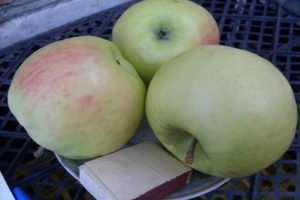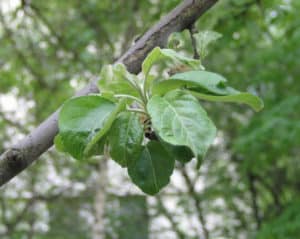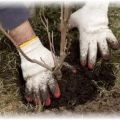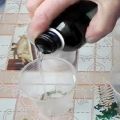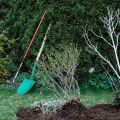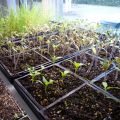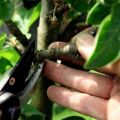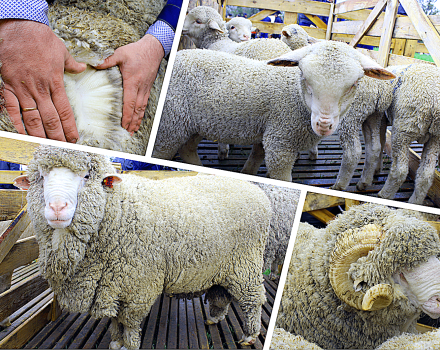Is it possible to grow an apple tree from a seed and how to properly care for seedlings at home
For the propagation of fruit trees, gardeners use several methods. The most convenient and common method of planting from seeds is considered. If you want to grow an apple tree from a seed, it is important to figure out how to properly prepare the seed and soil. Also factors such as further care, climate and environmental conditions are important for the development of trees.
Advantages and disadvantages of the method
The fruit tree propagation method has a number of comparative advantages and disadvantages.
The positive aspects include the following:
- The apple tree, which is grown from seed, turns out to be tall, durable, frost-resistant and strong.
- A seedling from seeds can be started at home and only then transferred to open soil.
- No special knowledge is required to land, just follow the step-by-step instructions.
The main disadvantage of growing new trees from seeds is the fact that after planting it will take several years for the seedlings to grow and begin to bear fruit. Also, the disadvantages include the need for several transplants at the beginning of the development of the seedling.
Seed preparation rules
The procedure for growing a fruit tree requires preliminary preparation of the apple seed. Seed processing is necessary when planting both at home and outdoors.
The preparation of seed involves the sequential implementation of simple actions that even a novice gardener can do at home.
Washing
The first step in preparing seeds for growing seedlings is washing. To do this, put the seeds in a container with water heated to room temperature and mix gently for 5 minutes. Then it remains to drain the water and spread the seeds on a gauze cloth. The process of washing the seed is necessary to remove top coat that can inhibit growth.
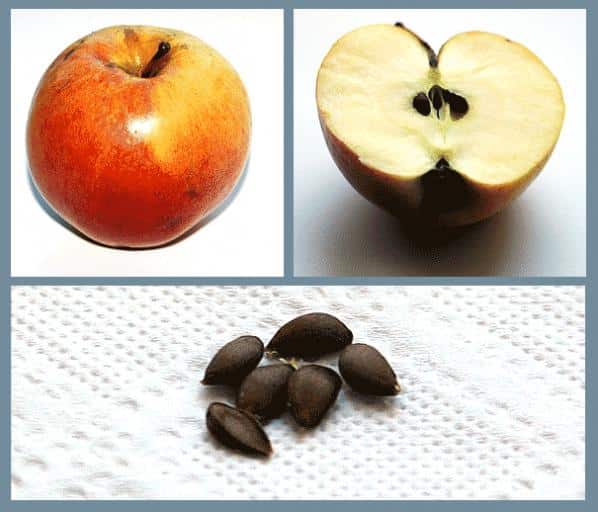
Soak
The washed seeds must be soaked for several days in filtered water to swell. The temperature of the liquid should be 20-25 degrees. To increase the germination capacity of seeds and prevent the occurrence of infectious diseases, growth stimulants can be added to the water. In specialized gardening stores, a wide variety of these preparations is presented, which can be selected taking into account the cultivated variety.
Stratification
The stratification process presupposes the special creation of unfavorable conditions for seed hardening.
As a result of stratification, the seeds are prepared for the natural conditions of germination. There are several types of stratification.
The first method is artificial, for which it is necessary:
- mix apple seeds with peat and sand, observing a ratio of 1: 3;
- dilute the resulting mixture with water until the liquid begins to flow to the surface;
- keep the seed for a week at room temperature for swelling;
- place the substrate in the refrigerator for 2 months.
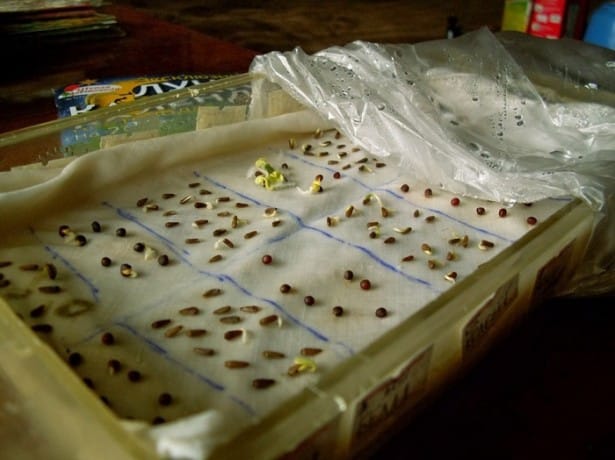
Artificial imitation of winter conditions increases the immunity of seeds, which has a beneficial effect on further maturation and yield. There is also a natural way of stratification, for which you need to extract the seeds from the fruits at the end of summer or in September, rinse them thoroughly and plant them in the ground.
Some time after the onset of the first frost, the adaptation of the seed begins, and in the spring sprouts emerge, ready for changeable weather conditions.
Landing dates
If the seeds are planted at home, then planting in pots can be done annually, but transplanting to a permanent place in the open field should be carried out in late spring. As the apple seedlings develop, it is necessary to transplant them into larger containers.

In the case of placing seeds on natural stratification, the optimal time for planting seeds is the beginning of autumn. You can also plant apple trees at the end of summer. In this case, after washing and soaking, the seeds are immediately transplanted into the soil. During autumn and winter, the sowing material swells, undergoes natural stratification and sprouts with the onset of spring. The main rule that is important to observe when planting is that the seeds should be placed in open soil 3-4 weeks before the expected onset of frost.
Preparing optimal soil and planting seeds
Before planting seeds in the soil, you need to prepare it. The earth must be saturated with nutrients. When grown at home, you need to fill containers with fertile soil, peat, humus, wood ash and superphosphate. A similar composition is required for outdoor planting.

It is necessary to plant the seed in shallow grooves with a depth of no more than 5 cm. The distance between seedlings should be 10-15 cm for free root development. If the plants are planned to be grown in one place for several years without transplanting, then the distance should be doubled.
Seedling care
To ensure the intensive growth of seedlings, it is necessary to properly care for them. After the germinated seeds are transferred to open ground, it is necessary to create favorable conditions for the development of roots, the growth of green vegetation and the ripening of apples. If you want to germinate seed at home, you also need to adhere to standard care rules.
Watering frequency and amount
The basic rule of care is regular watering. The soil should be kept moist throughout all stages of tree development. At first, after transplanting seedlings into open soil, watering should be performed twice a day using a small amount of liquid. Further, during the first year of life, until the root system grows to a large size, watering can be carried out once a week.
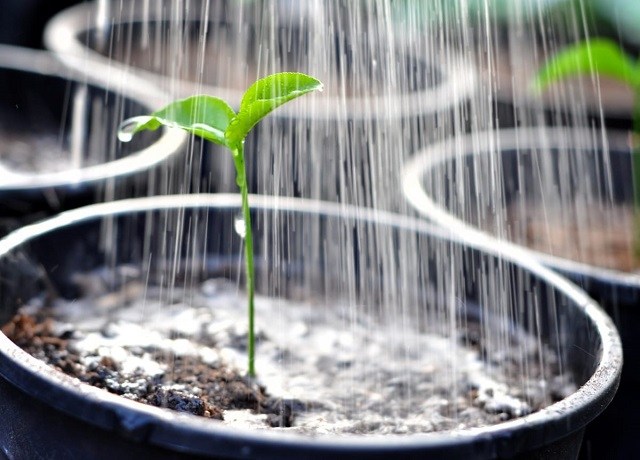
It is recommended to irrigate the seedlings early in the morning or in the evening when the sun begins to set. In hot weather, you should not water the trees, since most of the moisture will immediately evaporate, and if water gets on the leaves, they can burn out.
Top dressing
In the summer, for the active development of trees and improving the quality of the crop, it is required to apply top dressing to the soil. Common organic fertilizers such as chicken droppings and manure should not be used in the first year of seedling growth as they can adversely affect the seedlings. A more suitable type of plant nutrition is humic supplements or humus infusion.
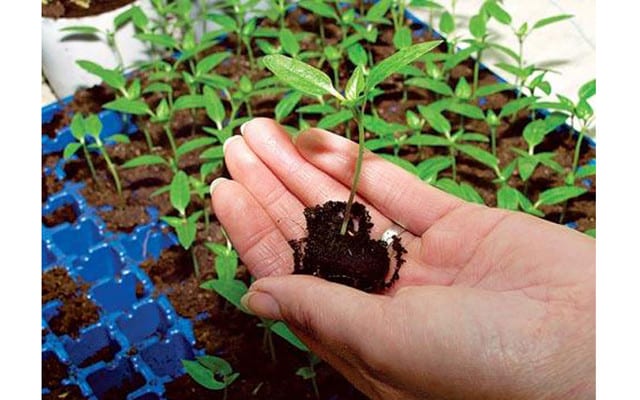
Before the onset of autumn frosts, the grown seedlings are fertilized with potassium-phosphorus solutions, which act as a growth stimulator. While loosening the earth, superphosphate and potassium chloride are poured onto the surface. When using mineral fertilizers, it is imperative to complete the process of feeding by watering.
Pruning sprouts
When the seedlings grow in height and form a large number of dense branches, the vegetation can interfere with other plantings and make maintenance difficult. In this case, a sample of sprouts is required. The main goals of pruning are to give the seedlings optimal volume, restore active growth and remove old branches.

First, you need to cut off dried and broken branches, and then reduce the height of the crown. In order not to lose well-growing branches and not to reduce the yield, the crown should be cut so that less than a third of all branches are removed.
Is it necessary to graft an apple tree grown from a bone
To grow an apple tree that will consistently yield a large harvest, experienced gardeners first get a sprout from a seed, and then graft it onto an adult tree.
This approach to tree propagation is due to the fact that the probability of obtaining a particular variety from seeds is low, and grafting of sprouts gives a positive result in most cases.
Grafting sprouts allows you to grow an apple tree that will have a strong trunk and resistance to negative external influences. To simplify the process of care and further harvesting, a low-growing variety should be used for the rootstock.
Pests and diseases of the apple tree and measures to combat them
Improper care, poor climatic conditions and poor land often lead to the development of diseases and the appearance of harmful insects on trees. The most common diseases are powdery mildew, scab and fruit rot.

Each infection has individual characteristics that can be detected by visual inspection. With the development of powdery mildew, a gray bloom appears on the surface of the bark and vegetation, which darkens over time. The leaves of the trees begin to turn yellow and dry out, the immunity of the apple tree falls, and it ceases to bear fruit. Scab is a fungal infection that affects leaves and inflorescences. Due to the effect of the disease, the pouring of fruits stops, and their surface is covered with cracks and spots. Fruit rot has similar characteristics, in which the crop is damaged and crumbles to the ground.
Among the pests attacking apple trees, it is worth highlighting the green aphid, leafworm, sucker and moth. Insects affect the foliage and fruits of trees, which reduces the amount of harvest, and in neglected cases, seedlings die. To prevent diseases and to combat their consequences, trees must be treated with fungicidal preparations. Insecticides and deterrent solutions are needed to kill pests.
The advantage of using chemicals is that they help grow trees without harming humans.
What difficulties can you face
When trying to grow a new apple tree from seed, even experienced gardeners can face a number of problems.
The list of common difficulties includes the following:
- The need for transplants.During the initial stages of seedling development, the plants need to be transplanted several times. When transferring fragile seedlings to a new place, there is a risk of damaging the root system or stems.
- The likelihood of damage by diseases and pests. Violation of agricultural practices and an unfavorable climate lead to rotting and damage to foliage and fruits.
- Damage to seeds. When preparing seed material, a number of nuances must be observed, therefore, if the technology is violated, it will not be possible to get seedlings.
By adhering to the standard rules of care and accuracy, it will be possible to grow healthy trees that will regularly bring apple harvest.
